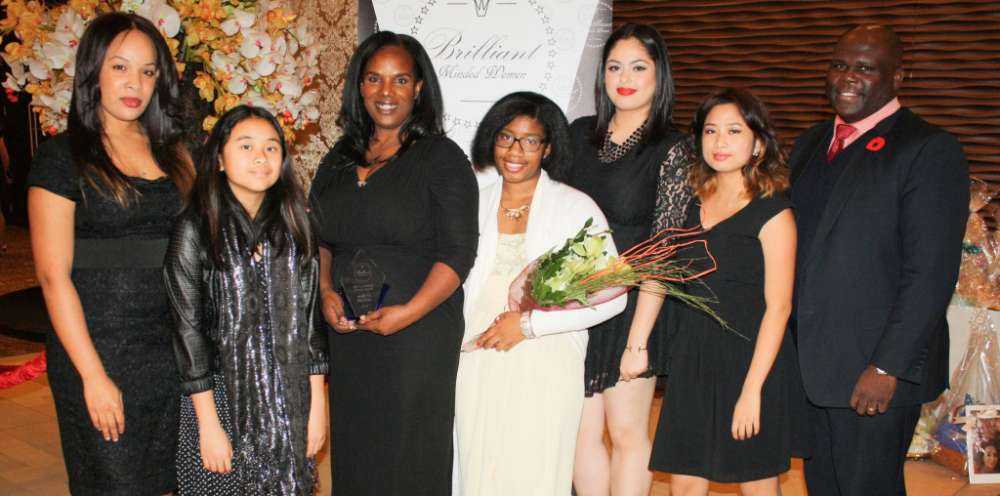on
BY ALYSSA MAHADEO
After many years of being repressed and having their opinions ignored, the women of today’s society have been working hard in their efforts to be the positive change we see in the world. They have banded together through inspiration and determination to raise awareness for the concerns they have about our ever changing communities and the challenges they face. Together they have taken huge strides in making it their personal mission to do whatever it takes to accomplish and reach their goals.
At the young age of twenty five polish native Agata Klimczak, immigrated to Canada. Living in unfamiliar territory, with the world at her feet, there were infinite possibilities for what she could accomplish. Agata cultivated her knowledge and skills growing into a successful and dynamic leader in network and business marketing. Through her success she founded the Brilliant Minded Women Network, helping to create new opportunities for other female entrepreneurs.
On Saturday November 7th, at Pearson Convention Centre in Brampton she hosted the 2nd annual Brilliant Women Grand Gala. This gala was organized to acknowledge the achievements and leadership of female entrepreneurs and to celebrate how much they matter to the community. This focused and inspiring event, allows women to connect with one another, introducing them to influential leaders that will motivate them to take their careers to the next level, while also allowing them to use their collective power to raise funds for local and international causes.
It was a luxurious event, strategically designed to make all of the women in the room feel like royalty. It was an elegant and sophisticated affair with a combination of dinner, networking, live entertainment and the opportunity to be inspired by the many speakers who are leading women entrepreneurs.
Over the course of the evening guests were privileged to hear women from all walks of life speak about the charities they founded and the challenges that they faced and overcame coming out as stronger and more resilient individuals in the end. They were able to share real and relatable stories that provoked a sense of awareness to the problems that every one of us are affected by in the community, letting us know that we aren’t alone and that there is always someone there who is willing to lend a helping hand.
The audience was able to hear a first hand account of keynote speaker Rhiannon Traill’s personal struggles from her early life to the changes she made and the challenges she endured to become the successful woman that she is today. Other speakers included Theresa Laurico and Pierre Lalande. Live entertainment included upbeat and engaging performances by singer Jay Harmony Davis and dancer Trishya Perera.
The awards presented throughout the evening recognized eighteen women for their inspiring accomplishments, each with their own unique backstory, but all with one mission in mind: support, grow and inspire.
Winners of the 2015 Brilliant Minded Women Awards included:
Charity of the Year – Deborah Bianchi
Philanthropist of the Year – Marilyn Field
Lifetime Achievement Award – Jody Steinhauer
Volunteer of the Year – Jolanta Morgenstern, Leslie Silvestri
Arts and Entertainment Award – Maria Nowotarska
Student of the Year – Joanna Klimczak
Maria Martini Resilience Award – Helena Kameka
Mind, Body and Spirit Award – Danuta Domurad & Magdalena Gessler
Business Development and Growth Award – Sabina M. DeVita
Global Excellence Award – Hazel McCallion
Political Leadership Award – Bonnie Crombie
Self Development Award – Joan John
Best Community Service Award – Marcia Brown & Anna Lopes
Many of these women have aspired to do great things regardless of the hands they were dealt in life. Some have immigrated here to Canada, searching for a better life and had to overcome the challenges of adjusting, to make something of themselves, confronting every problem with a determined attitude keeping their heads held high.
Collectively they all found a cause worth fighting for and they took the necessary steps to do their part and give back to the community. Amongst the awardees included two ladies from Jamaica, Marcia Brown for her community service through the youth community support organization she founded Trust 15 and Joan John, for overcoming the challenges she faced early in life when she was a visitor to Canada rising above the discrimination, intimidation and Systematic Justice to obtain an education.
The Brilliant Minded Women network has become an outlet where innovative and successful women can develop strong supportive relationships sharing new ways to grow their business. The evening was a huge success thanks to all of the sponsors that contributed to making it possible, all gaining valuable exposure for themselves and their companies. If you are interested in learning more about the Brilliant Minded Women Network and would like to join their movement please visit www.brilliantmindedwomen.com.
Stay in the loop with exclusive news, stories, and insights—delivered straight to your inbox. No fluff, just real content that matters. Sign up today!












